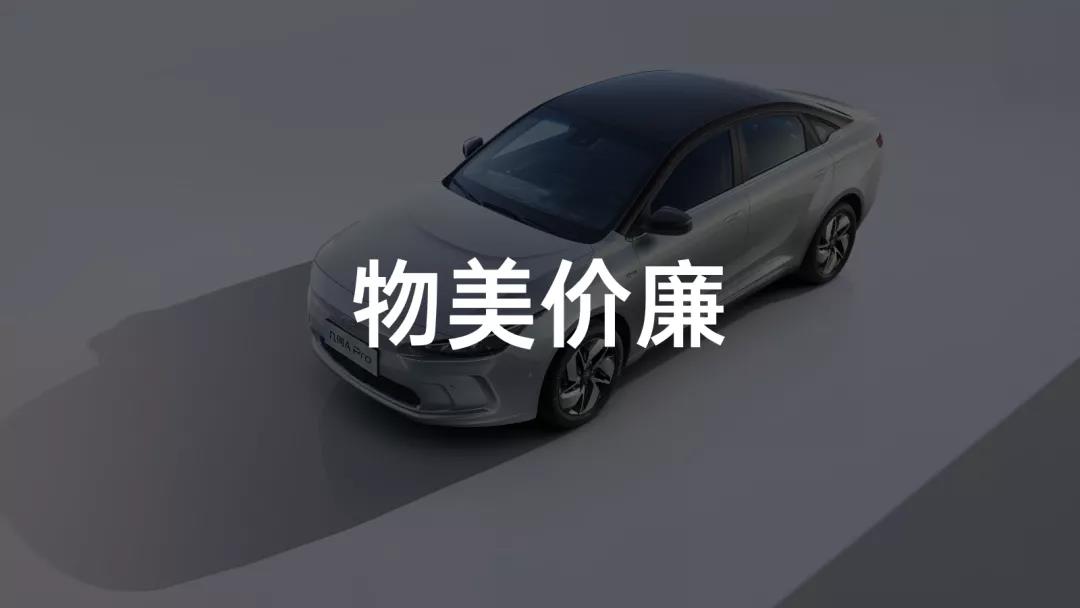First of all, I would like to express my gratitude for the invitation from Garage 42 and Geometry Automotive, which gave me the opportunity for a three-day test drive.
Early on Friday morning, I rushed to the Geometry 4S store in Hangzhou with great excitement, signed the agreement, and was led by the staff to pick up the car.
Sincerity
Although I had seen various pictures of the Geometry A Pro online a long time ago and had certain expectations, only seeing the actual car could I truly feel the “sincerity” of Geely regarding the design and configuration of the Geometry brand.
Although “appearance” is a matter of opinion, as the “mid-term facelift” of Geometry A, Pro’s improvements in appearance and interior are really well-balanced. Anyway, I must admit, I don’t like the “environmentally-friendly” fabric seats it used to have. The current two-tone body, blue and white interior style, suede-like seats, and even the air outlets on the center console designed as polygonal honeycomb shape directly upgrade the sense of luxury to a certain level, with a bit of the style of Lynk & Co.
Sitting in the car, my first impression was that the steering wheel was very small, making the handling feel more agile. The 12.3-inch central screen is a conventional skill of new energy vehicles, but Geometry designed the instrument panel originally in front of the steering wheel as particularly small, like a small iPad mini. Although it is compact, it displays everything needed, without being cluttered.
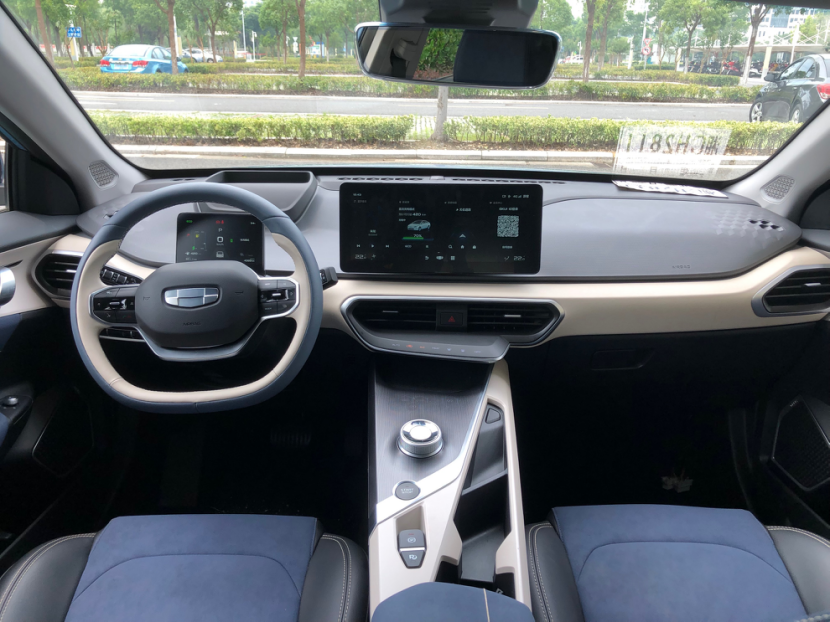
Moreover, the test drive car was equipped with the HUD head-up display. This thing really reduces the frequency of checking the instrument panel, and it is extremely user-friendly. The HUD of Geometry A Pro is customizable, with adjustable top and bottom positions and brightness (clearly visible even under strong daylight), with a clear and reasonable layout, integrating various information such as speed, assisted driving, and navigation. With this, the size of the instrument panel is insignificant.

The seats of Geometry are moderately soft and hard, and the space and distance are adequate, which can be understood considering its positioning as a compact family car. However, the front passenger seats are also equipped with a “boss button” function of million-dollar luxury cars. Can you handle it?

Furthermore, there are configurations such as the full-car panoramic view, transparent chassis, ambient lighting, wireless charging, and panoramic sunroof. Especially the large curved rear windshield extending to the top of the head for rear passengers is a design that I particularly liked, bringing both a view and a sense of luxury.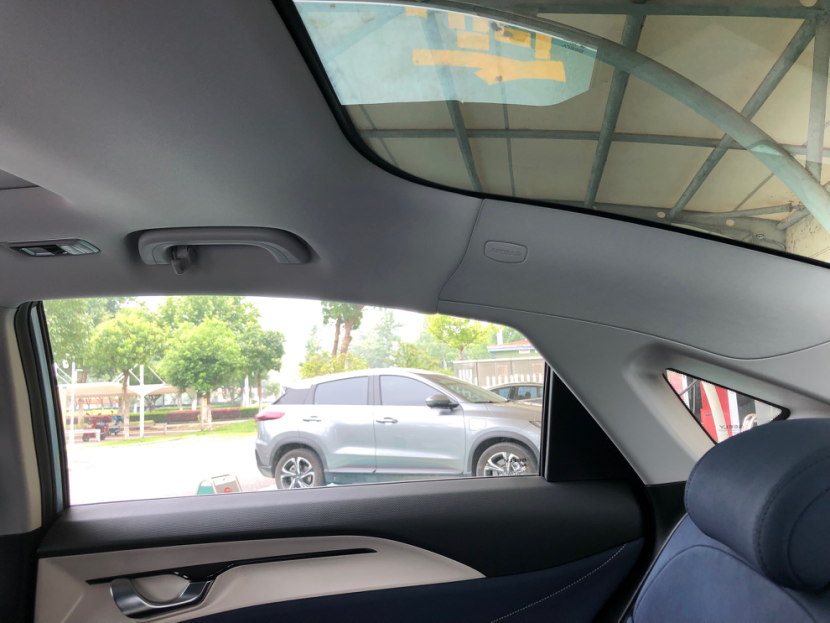
Of course, there are also some criticisms of this car, such as the touch panel below the center console, which feels a bit plastic. Personally, I think that such a large area only has four touch areas, which is not very efficient. In addition, the backlight of this panel is barely visible under strong outdoor light, and it is even harder to operate blindly. If it could be updated with pressure feedback like the Volkswagen ID.3, it would greatly improve convenience and quality.

In addition, raising the angle of the rear seat cushion would improve its supportability. The interior has few other drawbacks. At this price level, Geely has already surpassed some joint-venture cars by achieving this level of quality.
Great Driving Experience
In terms of driving experience, in addition to the previously mentioned small steering wheel, the Geely A Pro’s steering wheel also has some changes in steering feel based on its driving mode. In ECO mode, the steering feeling is very light but not insubstantial. In Sport mode, the feeling is heavier, which is a good feature.
The mechanical quality of the vehicle is also good. The front MacPherson independent suspension and rear torsion beam non-independent suspension clearly transmit feedback on bumpy roads during normal driving, but there is no unnecessary shaking. On high-speed corners, the body roll is also well controlled. After all, Geely’s tuning level is very good for a comfortable ride. However, I personally think that the brake pedal feeling is contradictory to its comfortable style. It is too sensitive, and lightly tapping on it will cause the car to stop abruptly.
The Geely A Pro’s acceleration from 0 to 100 km/h in 6.9 seconds is similar to that of the Li Xiang ONE. Although it doesn’t match the sensation of being pressed into the seat like a Tesla, after all, this is an electric car. It is easy to overtake gasoline cars on the road, and it makes ordinary people who drive an electric car for the first time say “wow”.
It can be seen that in the era of electric cars, the “pushback” feeling is no longer rare, and the difference of a few tenths of a second in the acceleration from 0 to 100 km/h is really insignificant for most ordinary people who do not pursue extreme performance. In daily driving, it is enough as long as it is practical.
The A Pro’s kinetic energy recovery system has three gears: high, medium, and low. After experiencing it, the differences are also obvious. At the highest gear, when the accelerator pedal is released, you can clearly feel the drag of the motor slowing down. It is worth mentioning that this drag has a linear reduction process, as if you could feel Geely’s engineers working hard to imitate the deceleration process of a gasoline car when the accelerator is released. However, this process feels like lightly stepping on the brake.At the beginning, it does take some time to adapt, but only after driving for a while can one truly experience the joy of the “single pedal mode” of an electric car. Personally, I do not oppose the “single pedal mode”, unlike those “keyboard warriors” online who criticize it as an anti-human design. I think the “user education” mentioned by a certain executive of a certain company is not wrong, but has been misled by unscrupulous media. The emergence of new things itself requires an acceptance process, and one should not give up just because of a single setback. On the contrary, I believe that the setting of regenerative braking is a new manifestation of each manufacturer’s tuning skills in the era of electric cars.

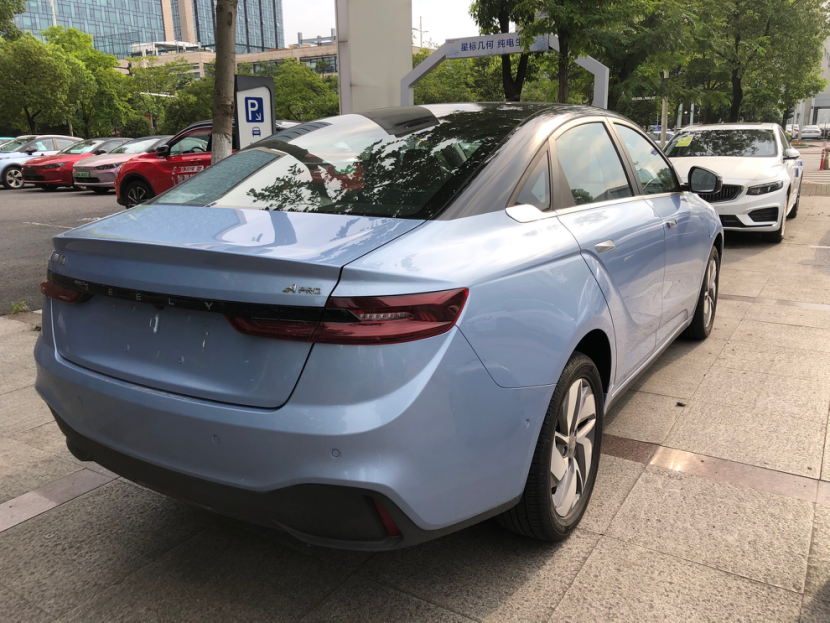
Advanced Driving Assistance System (ADAS)
As a post-95s generation, especially as an engineer who is somewhat “fastidious” about cars, the L2+ level of ADAS configuration of the Geometry A Pro is the aspect that attracts me the most.
With 5 cameras, 1 millimeter-wave radar, and 12 ultrasonic radars, although it cannot compare with the “pile materials madman” of some new car manufacturers, the configuration of the Geometry A Pro can only be described as moderate.
As its adaptive cruise control (ACC) is not fully functional below 30 km/h, it can only maximize its value in high-speed or elevated road conditions. (Editor’s note: The ACC of the Geometry A Pro can be fully functional at all speeds.)
The lane-keeping assistance (LKA) function of the Geometry A Pro can accurately recognize the lane if the lane line is clear. I personally feel that the recognition rate is at least above 90%. However, what I need to criticize is that even after I can clearly feel that the vehicle has been taken over from the steering wheel after recognition, its lane-keeping is not centered. On the contrary, it is very biased to the right. Even if I manually swing the steering wheel to make the vehicle centered, it will still gradually drift to the right until it is only a dozen centimeters away from the right lane line before being kept in the lane. This always makes me uneasy when there are large vehicles passing by on the highway.
Coincidentally, on the night when I got the car, I went back to my hometown and used the ADAS function most of the time on the highway. Fortunately, I also encountered heavy rain in the latter half of the journey. The ADAS function of the Geometry A Pro did not fail and was able to steadily control the speed and distance of the vehicle. Even in the situation where the windshield wipers were unable to wipe the rain off in time, the Geometry A Pro could still recognize the lane line and maintain its position, greatly reducing my driving fatigue.
It is worth mentioning that the following distance of the Geometry A Pro can be adjusted in three gears, but I think the difference between each gear is about half the length of a car body. Even if it is adjusted to the closest gear, the space is still large, which is roughly the distance of a small truck, and it is easily cut in. However, considering the use scenario of the highway, it is understandable from the perspective of safety.Moreover, with its front collision warning system and ADAS activated, the vehicle can timely monitor the state of the front vehicle, actively adjust speed and respond promptly, which is reassuring. If the distance is too close, the vehicle can also slow down while reminding me to take over through HUD graphics and sound alarm. This feature is praiseworthy.
Overall, the L2+ level assisted driving system of the Geely Geometry A Pro is impressive and practical, considering its price and level. Although there are some small flaws, they can be resolved through OTA updates.
Impressive Endurance
This time, the endurance of Geely Geometry A Pro is up to NEDC 600 km. Therefore, I charged the vehicle to 80% and went directly to my hometown on the highway. The air conditioning was set to 22 degrees, using normal mode. The total distance was about 300 kilometers, and the displayed battery dropped to 336 kilometers, which is equivalent to a 10% discount. This endurance performance surprised me and changed my impression of electric vehicles running at high speeds that their endurance needs to be discounted by 60-70%. It shows that the battery management of Geely Geometry A Pro is excellent.
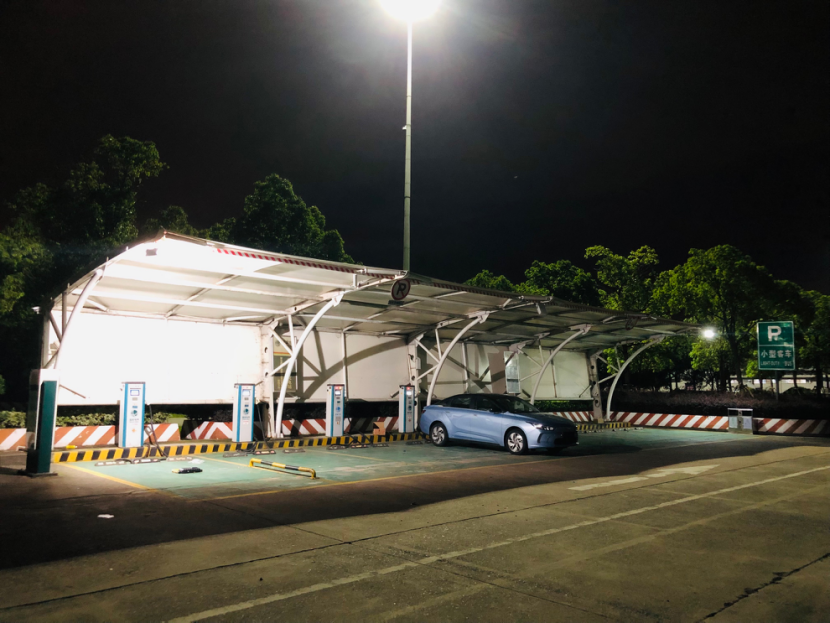
During the three-day in-depth experience, I also experienced the complete charging process at the charging stations. At present, the high-speed service areas in Jiangsu, Zhejiang, and Shanghai are equipped with the State Grid’s fast chargers, which can charge about 0.6 degrees per minute under 120A current. It takes about an hour to charge from 20% to 80%. This charging efficiency is acceptable for long-distance travel scenarios. After all, when driving continuously for three or four hours, people need to take a break, and it’s reasonable to charge the car during the rest time.
To be honest, this is still a relatively ideal usage scenario because you cannot predict whether the charging station you’ll encounter ahead is good or bad, and whether the current is high or low, or if there are petrol vehicles occupying the charging station.
During the three-day experience, I encountered various “surprises”. For example, although the App showed that the charging pile was available, it was “offline” when I arrived. Even when it is a State Grid charger, the current difference between different stations is huge. The “fast charger” with only 17A charged so slowly that I questioned my life. At the Yangcheng Lake service area, there were only four chargers, and only one was usable. Fortunately, when I arrived, the previous car owner had just finished charging and was about to leave…

Therefore, although electric vehicles are currently very popular, if you do not have the conditions to install a charging station at home, your happiness will be greatly reduced.
Although the three-day test drive has ended, the scene of Geely Geometry A Pro overtaking a Ferrari still vividly remains in my mind.
ConclusionThank you again to Garage 42 and Geometry Automotive for giving me the opportunity to test drive their car. It allowed me to feel the efforts and sincerity put forth by domestic traditional manufacturers in embracing the new energy revolution. In fact, I have previously test driven models such as NIO, Li Xiang, XPeng and others. Their prices have long exceeded two to three hundred thousand yuan or even higher. With the environment of consumer upgrades, the “arms race” of domestic electric vehicle companies has entered a white-hot stage.
Of course, we cannot expect Geometry to compete with these models, but at a price range of 100,000 to 200,000 yuan, Geometry A Pro has indeed demonstrated competitiveness beyond its peers. It is a pity that its competitors are the sales champions such as Volkswagen, Toyota, and Nissan.
As a brand that once benchmarked against Tesla Model 3 and claimed to be “committed to becoming the first choice for global users of pure electric travel”, Geometry’s current situation is somewhat embarrassing, especially after Geely launched its new brand, Zeekr. Geometry’s market positioning can only go down. However, for us ordinary consumers, having one more “good value for money” option is not a bad thing, is it?
This article is a translation by ChatGPT of a Chinese report from 42HOW. If you have any questions about it, please email bd@42how.com.
